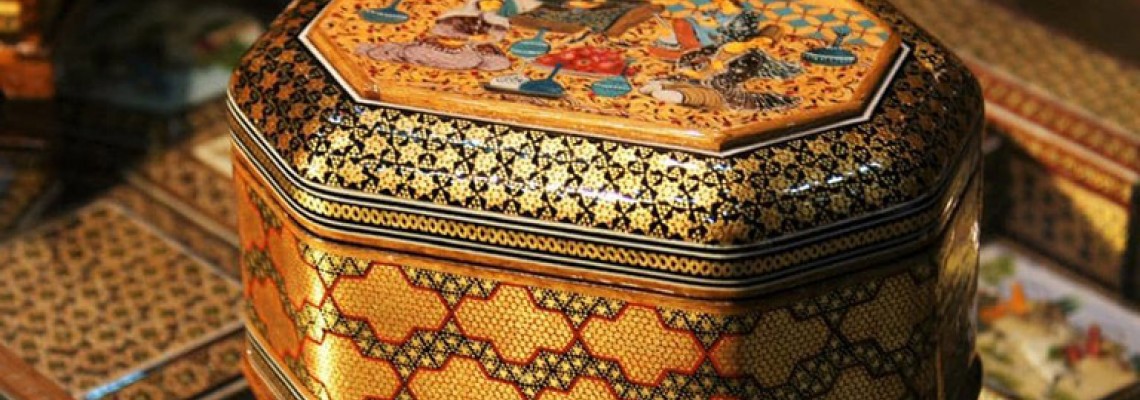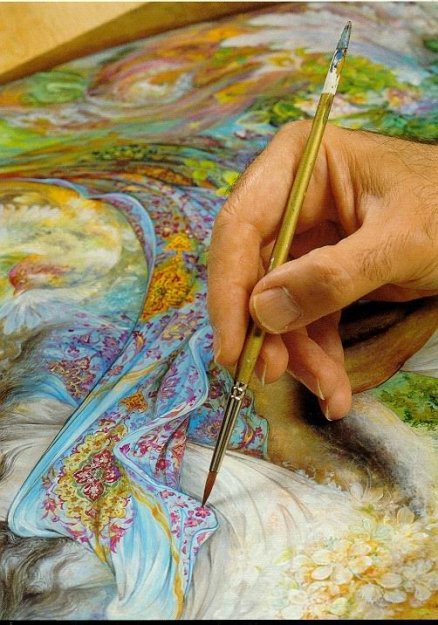
Miniature
It is difficult to trace the origins of Iranian miniature art, as it reached its peak mainly during the Mongol and Timurid periods (16th-13th centuries). The Mongol rulers of Iran introduced the Chinese painting ritual and brought with them a large number of Chinese craftsmen. Paper itself arrived in Iran from China in 753 AD. So the influence of China is very strong.
The most important function of a miniature is an illustration. It gave a visual image to the literary draught, making it more entertaining and easier to understand. The miniature became the link between artistic language and poetic language, in deep and sincere harmony with poetry.
The gigantic wealth of inspiring literature led to the emergence of many important miniature schools, each of which had its own style and created a significant variety of paintings. Through these schools, miniature painting made great progress both in Iran and Central Asia. Three of the most effective schools were located in Shiraz, Tabriz, and Herat.
One of the most famous and influential painters of the Herat school was Kamaluddin Behzad, whose creative art was strongly influenced by the works of the Jami and Navai poets. In his works, he placed special emphasis on depicting not only people but also what surrounded them in their daily lives. Behzad brought the miniature painting to its true flowering. He shared the fame of Herat painting with other prominent miniature painters of the time: his teacher and the head of Darbar Studio, Mirak Naksh, Qasem Ali, Khajeh Mohammad Naksh, and Shah Muzaffar.
Iranian Miniature Characteristics
Miniature is a French term meaning a replica of nature, but Iranian miniatures are fundamentally different from what is called a miniature in East Asia and Europe. The only similarity between Iranian miniature and miniatures of China, Japan, and Europe is a small scale. There are also other unique features of Iranian miniatures. There are other unique features of Iranian miniatures.
The first is the richness of subtle details despite the small size, no small details have passed through the hands of the artist that captivate the eye of any viewer, some of the paintings are so delicate that you need a magnifying glass to see the exact beauty of it.
The second feature is that the Iranian miniature does not use the perspective technique, but only places the elements on a flat surface, which looks like an amateur to those who are accustomed to Western painting styles.

Moreover, miniature in Iran refers not only to an independent work of art but also to some illustrations of Iranian manuscripts, for example, in the margins of poetry books. This type of art became popular in the early fourteenth century. Manuscripts were decorated with scenes of hunting, battlefields, and festivities.
Where can you see beautiful Iranian miniatures?
Iranian miniatures began to worship books and paper. Later, however, he found his way to create the walls of a magnificent building. During the Parthian and Sassanid empires in the pre-Islamic period, the walls of the palace of the kings were decorated with miniature art, but unfortunately, nothing remains of this building. In the Islamic period, when miniature art was at its peak, the Safavid kings paid special attention to miniature art and for this reason, many historical monuments from this period were decorated with amazingly colorful Iranian paintings, which you can visit on your trip to Iran.
Since Isfahan was the capital of Iran during the Safavid period, this city is the best place to see Iranian miniatures. Forty Pillars, Aali Qapo, Hasht Behesht, Qaisaria Bazaar, Isfahan. The House of Boroujerdi in Kashan and Chehel Soton in Isfahan are the best examples of Iranian miniatures in Iran. Isfahan is famous for its masterpieces of Islamic architecture and tour guides include this city in all Iran tours.
Can I buy an Iranian miniature as a souvenir from Iran?
Iranian miniatures have come a long way in painting images from a thin layer of bone. There are still artists who follow the miniature schools and create beautiful works of art that deserve recognition. The price varies depending on the skill of the artist, the quality of the work, the size, and the subject of the miniature. Most tourists like to look at the Iranian works in the shops. And look closely at the works of Iranian artists in their workshops to choose and buy the best souvenirs. You can buy Iranian miniatures not only as murals but also on various items such as decorative utensils that make them even more valuable. You can also have a buy from online shopping from Iran and buy Persian handicrafts like miniatures.

Leave a Comment